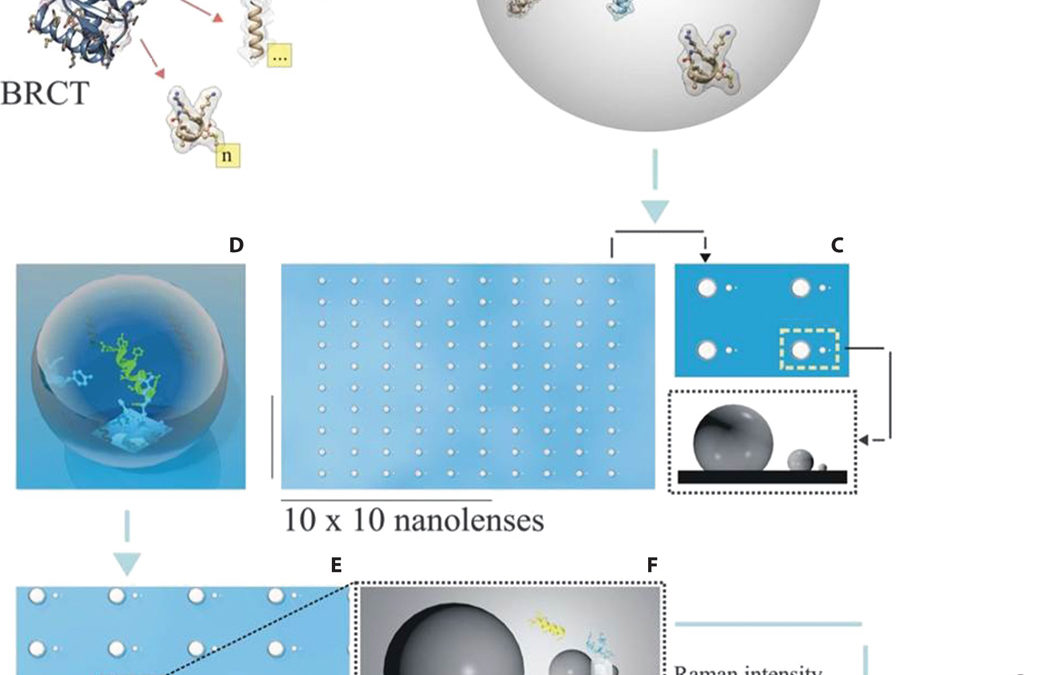Control of the architecture and electromagnetic behavior of nanostructures offers the possibility of designing and fabricating sensors that, owing to their intrinsic behavior, provide solutions to new problems in various fields. We show detection of peptides in multicomponent mixtures derived from human samples for early diagnosis of breast cancer. The architecture of sensors is based on a matrix array where pixels constitute a plasmonic device showing a strong electric field enhancement localized in an area of a few square nanometers. The method allows detection of single point mutations in peptides composing the BRCA1 protein. The sensitivity demonstrated falls in the picomolar (10−12 M) range. The success of this approach is a result of accurate design and fabrication control. The residual roughness introduced by fabrication was taken into account in optical modeling and was a further contributing factor in plasmon localization, increasing the sensitivity and selectivity of the sensors. This methodology developed for breast cancer detection can be considered a general strategy that is applicable to various pathologies and other chemical analytical cases where complex mixtures have to be resolved in their constitutive components.
Read more at: Science Advances 04 Sep 2015: Vol. 1, no. 8, e1500487


Recent Comments